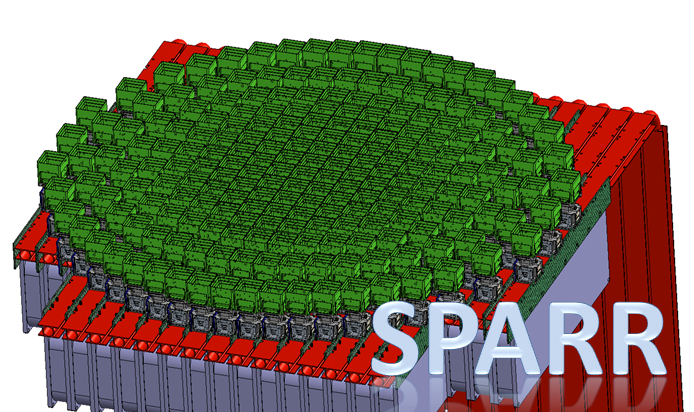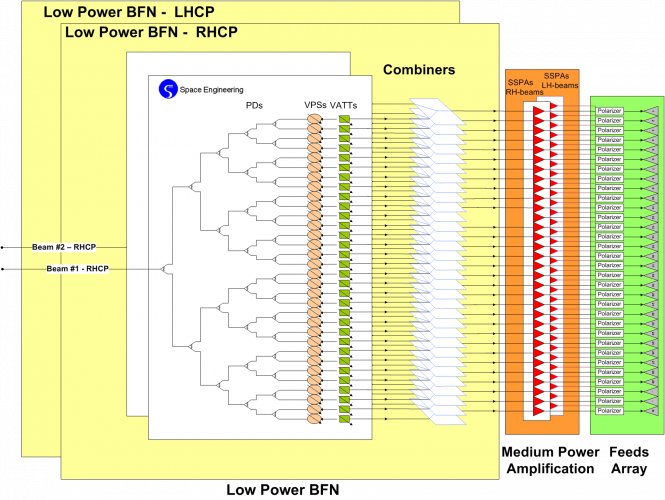
-
StatusCompleted
-
Status date2015-12-28
Satellite operators require often antennas able to provide flexibility in terms of coverage and channelization adapting dynamically the on-board available resources and following the traffic demand.
Typically the main objectives to consider, for a transmit antenna, are:
- in-orbit flexibility in terms of service area definition;
- RF power management guaranteeing the most efficient allocation among the service areas and the users;
- minimization of the number of controls
- maximization of the power amplifier efficiency
- stringent pattern requirements in term of side lobe level and isolation.
The scope of this Artes 5.1 activity is to design a Transmit reconfigurable direct radiating array based on a sparse layout and to validate the design with a representative antenna demonstrator.
During the project several challenges have been faced and solved adopting state of the art solutions like:
- design, manufacturing and testing of an innovative Active Feed Module composed by a square horn integrating two SSPAs;
- design, manufacturing and testing of a modular box BFN able to feed an 8 Active Feed Module providing the re-configurable network for multi-beams (i.e., 4 beams per polarization) based on multi-layer PCB technology and high MMICs integration.
Active Direct Radiating Arrays allow generating multiple beams for satellite communication systems with a high degree of re-configurability and flexibility. They have been rarely implemented so far because of their relative high complexity and cost. These drawbacks are due to the high number of active equipment and radiating elements, and to the poor efficiency of the HPAs (also associated to aperture tapering).
The Active Sparse Arrays with equal amplitude distribution at amplifiers level represent a valid alternative to periodic arrays. Moreover, sparse arrays organised in parallel linear sub-arrays permit improving the modularity and reducing cost and complexity of the array.
The simplified layout allows also to integrate the cooling system (heat pipes) which are directly connected to the active feed modules.
The developed product represents a starting point for the following aspects:
1) the developed Active Feed Module allows to integrate the power section (i.e., SSPAs) directly inside the radiating elements permitting to be mounted directly on the Heat Pipes improving the cooling management;
2) the developed multi-beams BFN modules are at the state of the art allowing to manage more beams with minimized volume and mass.
SYSTEM ARCHITECTURE
The system architecture implemented in the overall detailed antenna design and reflected in the active Demonstrator is shown in the figure below:

The system architecture foresees several BFNs, each one corresponding to the generated reconfigurable beam. The BFNs are connected to the radiating elements by combiners.
Since the multi-beams BFN is placed before the power amplifier section, all the BFNs exhibits low power characteristics.
The program has been divided in two phases:
a) Phase 1 dedicated to the selection of the mission scenario, the consolidation of the requirements and the detailed design of the complete active sparse array;
b) Phase 2 dedicated to the design, manufacturing and testing of the active multi-beams Demonstrator
The implementation of the technique able to fill the antenna aperture by a constrained alignment sparse array to allow the Heat-Pipe integration has been carried out.
The design of the antenna has been completed to provide 52 dBi of Edge of Coverage, two orthogonal circular polarizations, 4 beams per polarization with characteristic of re-configurability in terms of steering and power allocation.
The feasibility has been confirmed by the manufacturing and testing of representative active demonstrator.



